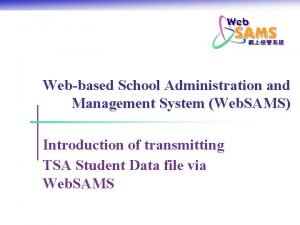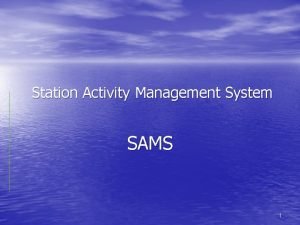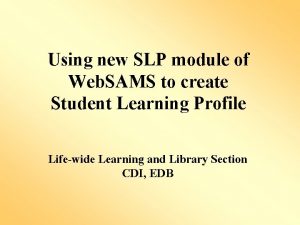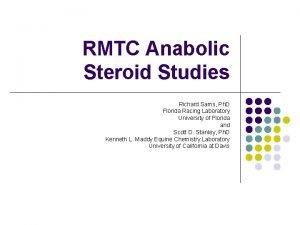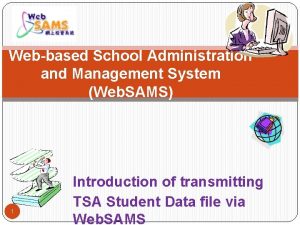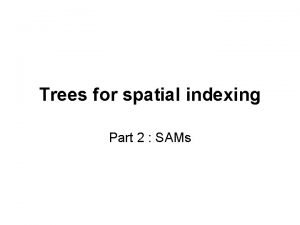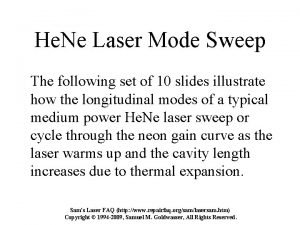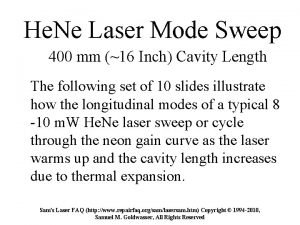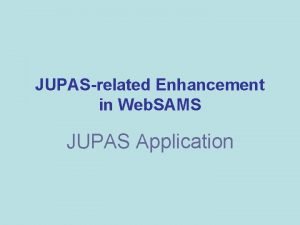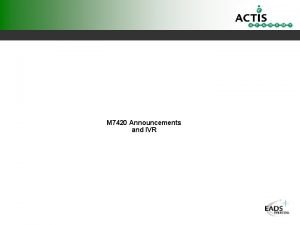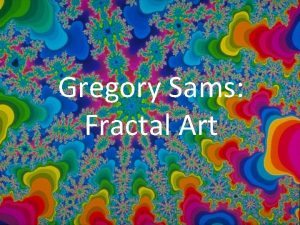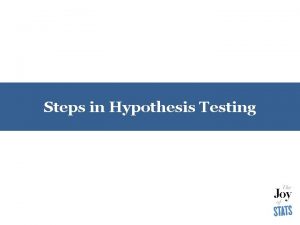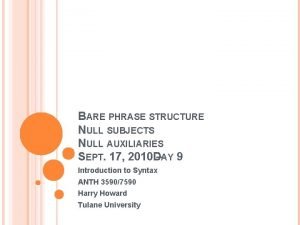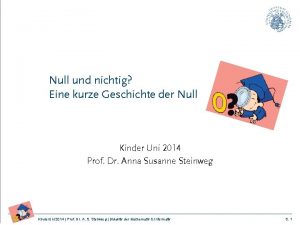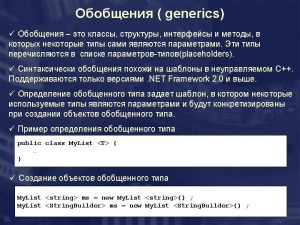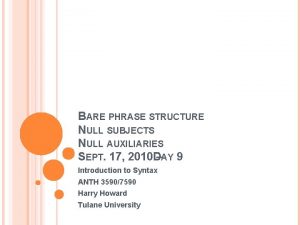Null Instantiation Nina Jagtiani and Chris Sams 7420


















- Slides: 18

Null Instantiation Nina Jagtiani and Chris Sams 7420 Fall 2006

Frame. Net

What is Null Instantiation? There are cases where arguments are semantically present, but absent syntactically. n Semantically, we can categorize the missing argument by how it is interpreted. n Syntactically, we can categorize the missing argument by how it is licensed. n

Semantic Classification n Indefinite Null Instantiation (INI) – – n Jena ate. The referent of the missing argument is not recoverable from the text. Definite Null Instantiation (DNI) – – I told you already. (tell, inform, and notify) The referent should be recoverable from the context.

Semantic Classification contd. n Constructional Null Instantiation (CNI) – – – Harsh things were said. Tell me about yourself. The referent that is missing is determined by the syntactic construction. (Passives and imperatives allow an unexpressed argument. )

Syntactic Classification Lexical- The potential for a missing argument comes from the lexical entry of the licensing head e. g. ‘eat’ allows INI of it’s object, but ‘devour’ does not n Systemic- Japanese any argument pro-drop (must be nice) and Spanish ‘pro-drop’. Systemic pro-drop allows DNI. n

A claim about theory. . . No language allows INI of subjects. n What is Will’s take on the claim? n

Will has reviewed the literature, and has a concern. . . n The German Impersonal Passive – – – Hier wird nicht geparkt. (No parking here) Im Gang wird nicht geraucht (No smoking in the corridor) Here we seem to have a INI of the subject.

What about Japanese? n Tabeta – I/you/he ate or I/you/he ate it. Who ate it? – The context determines the meaning. –

Evidence for the argument being present on the conceptual level n From Koenig (1993) La correspondante elle (les) admirait aussi. n The corrispondent she (them) admired also. n Je lui ai fait manger chaudes. n I him have made eat (them) hot n

Motion (Fillmore 1986) n n Many motion verbs of location, allow DNI of the location SOURCE (leave, depart) GOAL (arrive or come) and LANDMARK (pass or cross). The solution occurred to me right before I left ( ) at 4 pm. However, with ficitive motion as in ‘the highway passes’ the LANDMARK is not subject to omission. The highway passes (Springdale) before heading in an easterly direction.

Focal Ellipsis n Let’s look at page 367

Focal Ellipsis n What is missing is a focus rather than a referent that has active discourse status and/or bears the pragmatic relation to the proposition expressed by the clause (Ruppenhofer p. 367)

A nice chart n Let’s look at page 368

Blocked Complements n Page 371 -72

% of NI of certain verbs n Page 423

Syntactic Properties of Various Omission Types n Page 428

Where to go from here? Problems: incorporation p. 476 n Cross linguistic concerns? n Is it possible to predict which element of a given verb frame will be NI? n
 Inference vs instantiation
Inference vs instantiation Web sams
Web sams Activity management system
Activity management system Slidetodoc.com
Slidetodoc.com Economics 4.05 uncle sam's toolbox honors
Economics 4.05 uncle sam's toolbox honors Substance abuse monitoring system
Substance abuse monitoring system Sams slp
Sams slp Sams score
Sams score Dr richard sams
Dr richard sams Web sams
Web sams Kd tree
Kd tree Onkel sams barbershop
Onkel sams barbershop Sams dog house
Sams dog house Sam's laser faq
Sam's laser faq Sam's sweep
Sam's sweep Jupas slp upload
Jupas slp upload Department of education revised curriculum 2020
Department of education revised curriculum 2020 Ucsd flying sams
Ucsd flying sams Sam's club jimmy dean breakfast sandwiches
Sam's club jimmy dean breakfast sandwiches

